
Healthcare services company Astrana Health missed Wall Street’s revenue expectations in Q1 CY2025, but sales rose 53.4% year on year to $620.4 million. Next quarter’s revenue guidance of $635 million underwhelmed, coming in 2.7% below analysts’ estimates. Its GAAP profit of $0.14 per share was 33.1% below analysts’ consensus estimates.
Is now the time to buy Astrana Health? Find out by accessing our full research report, it’s free.
Astrana Health (ASTH) Q1 CY2025 Highlights:
- Revenue: $620.4 million vs analyst estimates of $636.2 million (53.4% year-on-year growth, 2.5% miss)
- EPS (GAAP): $0.14 vs analyst expectations of $0.21 (33.1% miss)
- Adjusted EBITDA: $36.39 million vs analyst estimates of $35.7 million (5.9% margin, 1.9% beat)
- The company reconfirmed its revenue guidance for the full year of $2.6 billion at the midpoint
- EBITDA guidance for the full year is $180 million at the midpoint, below analyst estimates of $181.2 million
- Operating Margin: 3.3%, down from 7.5% in the same quarter last year
- Free Cash Flow Margin: 2.2%, similar to the same quarter last year
- Market Capitalization: $1.67 billion
"Astrana's strong start to the year reflects the continued momentum behind our mission to build the nation's leading patient-centered healthcare platform. Our differentiated clinical capabilities and technology-enabled delegated model continue to drive strong, profitable growth while delivering better outcomes for both patients and providers. Even in a complex regulatory and economic environment, we continue to prove that value-based care can deliver meaningful impact at scale with long-term sustainability," said Brandon Sim, President and CEO of Astrana Health.
Company Overview
Formerly known as Apollo Medical Holdings until early 2024, Astrana Health (NASDAQ:ASTH) operates a technology-powered healthcare platform that enables physicians to deliver coordinated care while successfully participating in value-based payment models.
Sales Growth
A company’s long-term sales performance can indicate its overall quality. Any business can experience short-term success, but top-performing ones enjoy sustained growth for years. Thankfully, Astrana Health’s 29% annualized revenue growth over the last five years was exceptional. Its growth beat the average healthcare company and shows its offerings resonate with customers, a helpful starting point for our analysis.
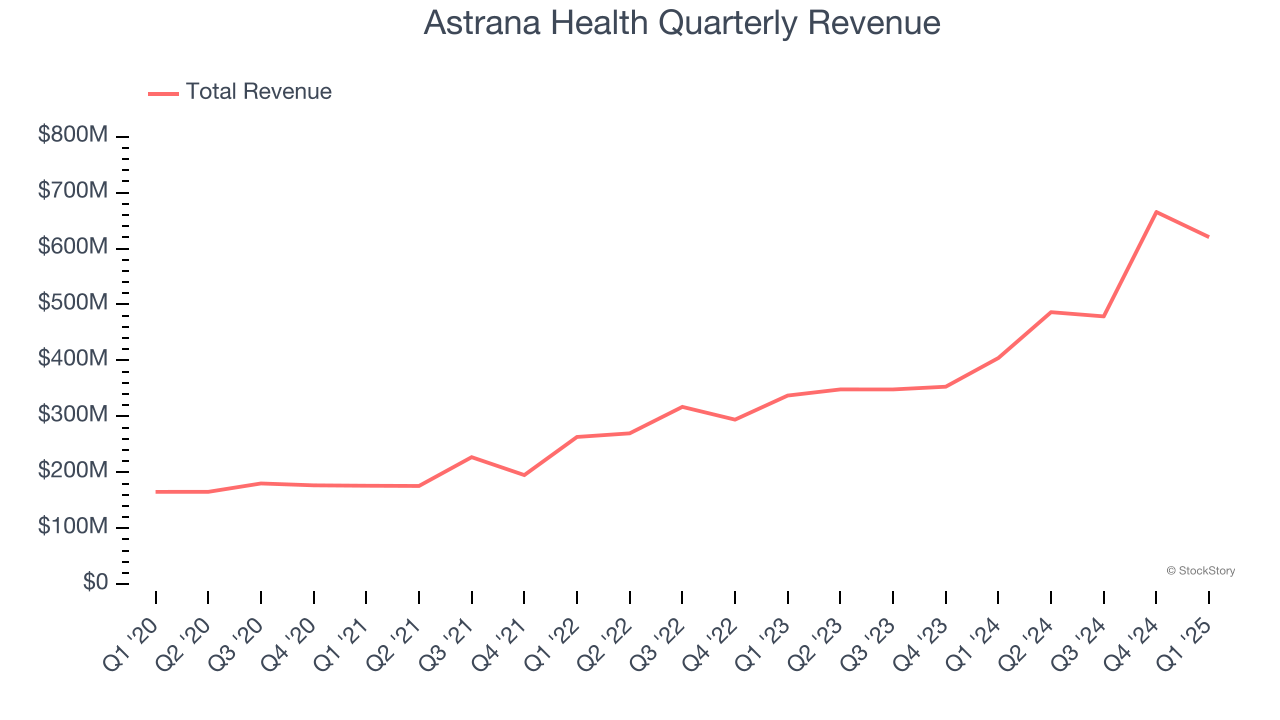
Long-term growth is the most important, but within healthcare, a half-decade historical view may miss new innovations or demand cycles. Astrana Health’s annualized revenue growth of 35.9% over the last two years is above its five-year trend, suggesting its demand was strong and recently accelerated. 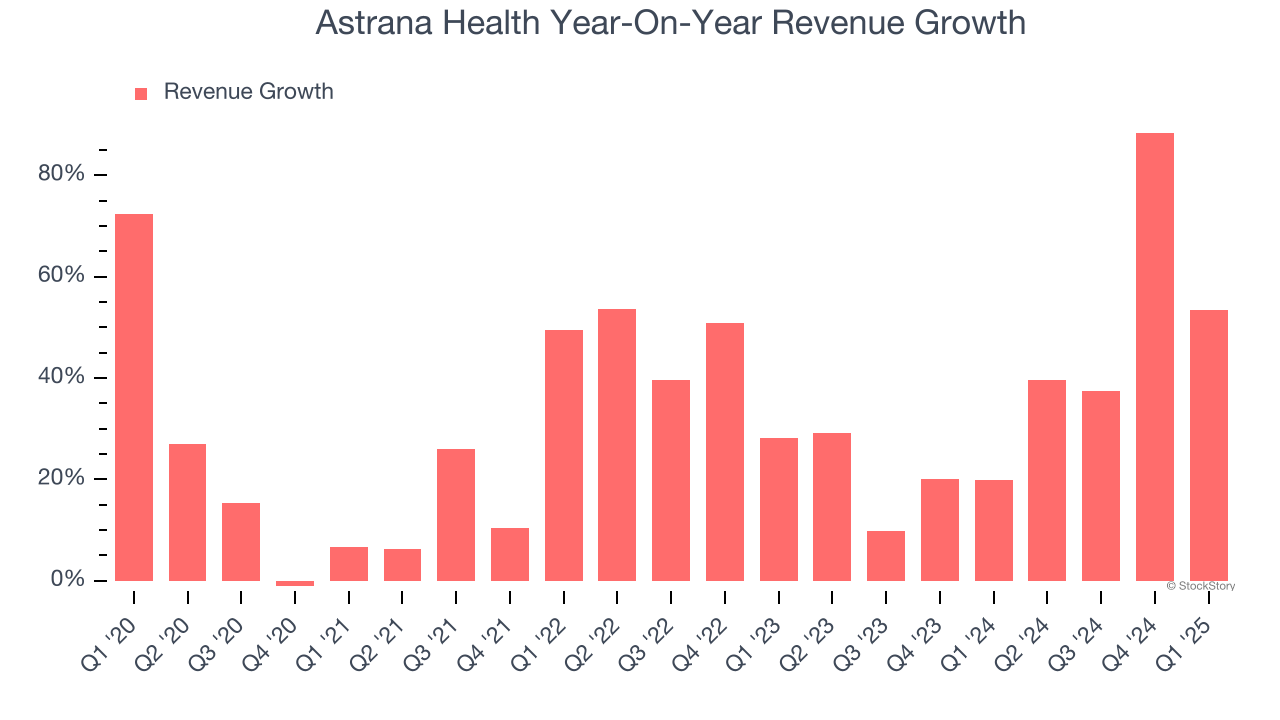
We can better understand the company’s revenue dynamics by analyzing its most important segment, . Over the last two years, Astrana Health’s revenue averaged 39.5% year-on-year growth.
This quarter, Astrana Health achieved a magnificent 53.4% year-on-year revenue growth rate, but its $620.4 million of revenue fell short of Wall Street’s lofty estimates. Company management is currently guiding for a 30.6% year-on-year increase in sales next quarter.
Looking further ahead, sell-side analysts expect revenue to grow 26.1% over the next 12 months, a deceleration versus the last two years. Despite the slowdown, this projection is commendable and indicates the market sees success for its products and services.
Software is eating the world and there is virtually no industry left that has been untouched by it. That drives increasing demand for tools helping software developers do their jobs, whether it be monitoring critical cloud infrastructure, integrating audio and video functionality, or ensuring smooth content streaming. Click here to access a free report on our 3 favorite stocks to play this generational megatrend.
Operating Margin
Astrana Health was profitable over the last five years but held back by its large cost base. Its average operating margin of 7.6% was weak for a healthcare business.
Looking at the trend in its profitability, Astrana Health’s operating margin decreased by 13.1 percentage points over the last five years. The company’s two-year trajectory also shows it failed to get its profitability back to the peak as its margin fell by 4.7 percentage points. This performance was poor no matter how you look at it - it shows its expenses were rising and it couldn’t pass those costs onto its customers.
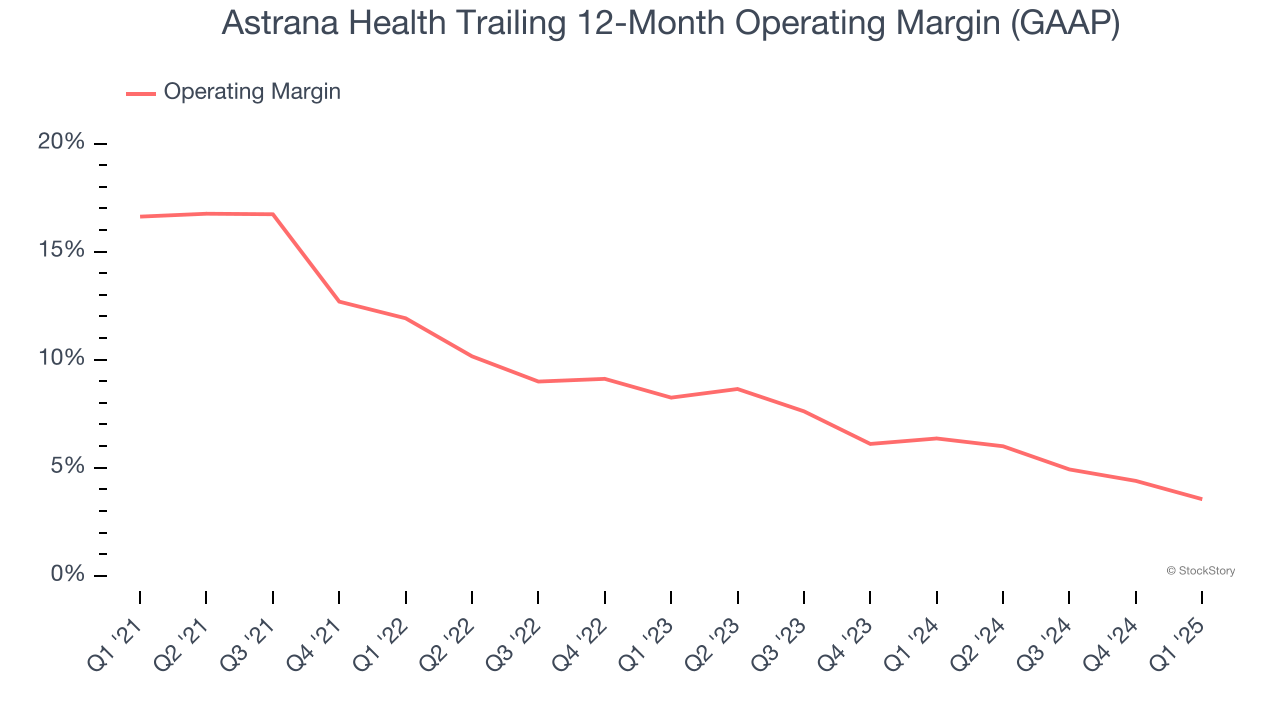
In Q1, Astrana Health generated an operating profit margin of 3.3%, down 4.1 percentage points year on year. This contraction shows it was less efficient because its expenses grew faster than its revenue.
Earnings Per Share
We track the long-term change in earnings per share (EPS) for the same reason as long-term revenue growth. Compared to revenue, however, EPS highlights whether a company’s growth is profitable.
Astrana Health’s EPS grew at a solid 8.3% compounded annual growth rate over the last five years. However, this performance was lower than its 29% annualized revenue growth, telling us the company became less profitable on a per-share basis as it expanded.
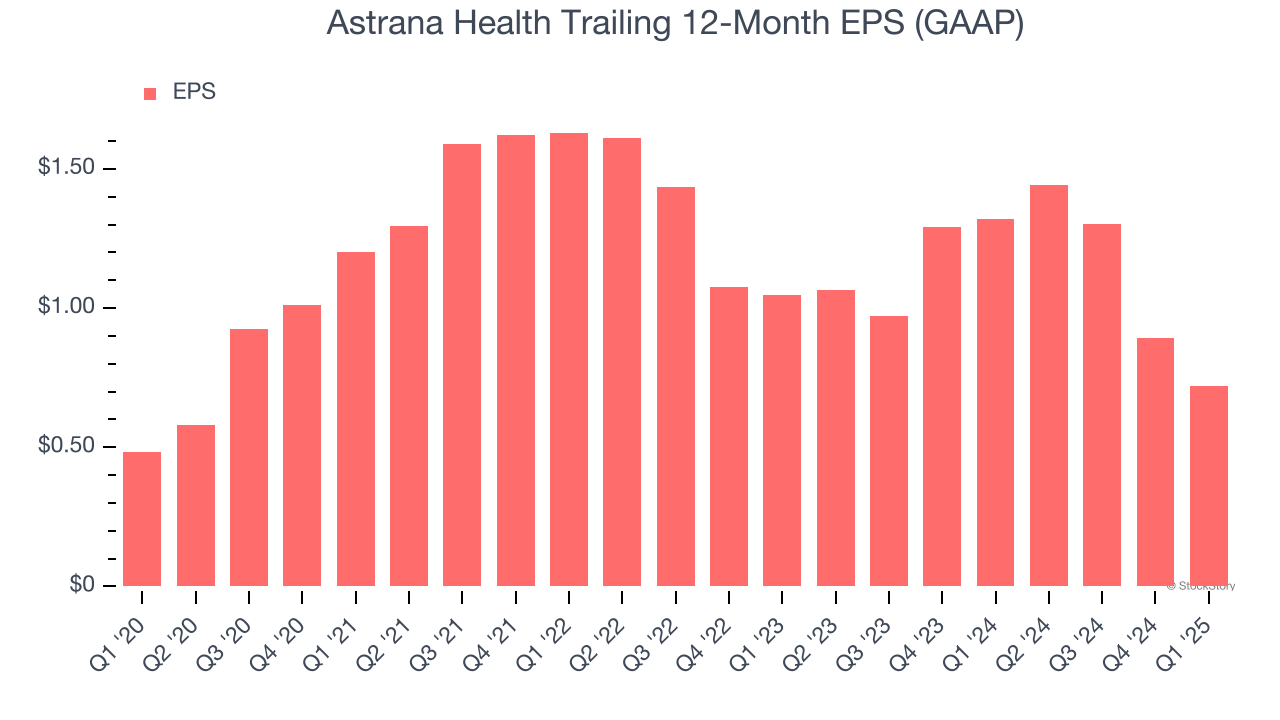
Diving into the nuances of Astrana Health’s earnings can give us a better understanding of its performance. As we mentioned earlier, Astrana Health’s operating margin declined by 13.1 percentage points over the last five years. Its share count also grew by 18.7%, meaning the company not only became less efficient with its operating expenses but also diluted its shareholders. 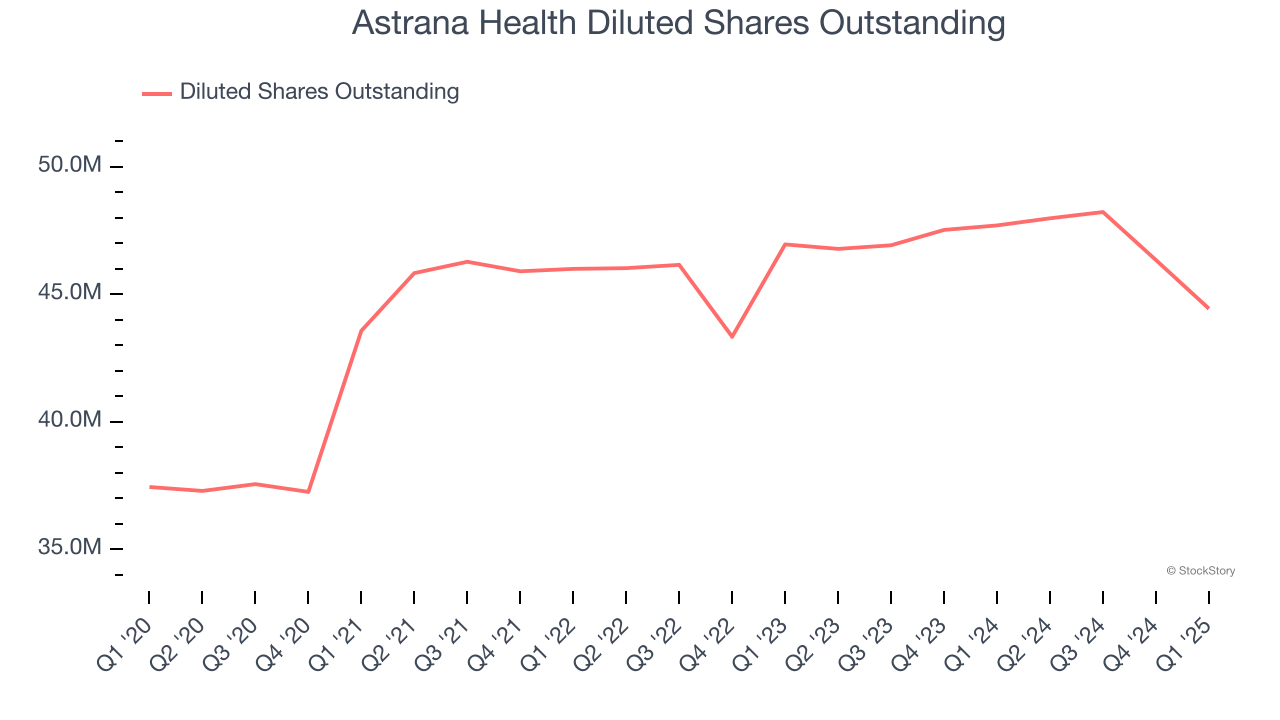
In Q1, Astrana Health reported EPS at $0.14, down from $0.31 in the same quarter last year. This print missed analysts’ estimates, but we care more about long-term EPS growth than short-term movements. Over the next 12 months, Wall Street expects Astrana Health’s full-year EPS of $0.72 to grow 92.3%.
Key Takeaways from Astrana Health’s Q1 Results
It was good to see Astrana Health provide EBITDA guidance for next quarter that slightly beat analysts’ expectations. On the other hand, its revenue guidance for next quarter missed significantly and its revenue and EPS fell short of Wall Street’s estimates. Overall, this quarter could have been better. The stock traded down 3.9% to $32.11 immediately following the results.
The latest quarter from Astrana Health’s wasn’t that good. One earnings report doesn’t define a company’s quality, though, so let’s explore whether the stock is a buy at the current price. If you’re making that decision, you should consider the bigger picture of valuation, business qualities, as well as the latest earnings. We cover that in our actionable full research report which you can read here, it’s free.
